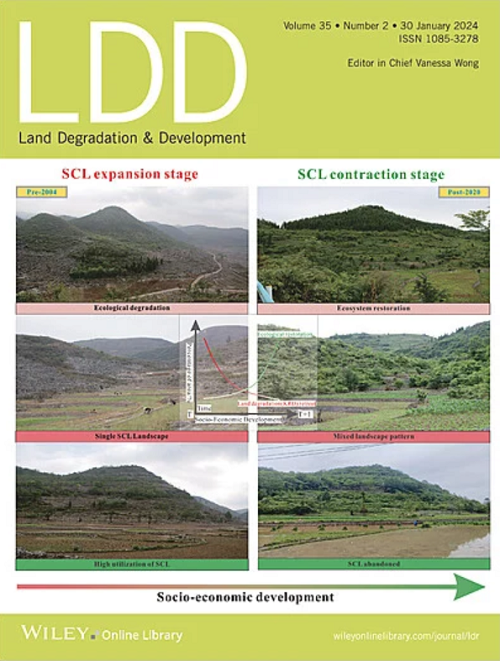Detailed Explanation of Fine Factors in Multidimensional Evaluation Framework and Exploration of Sustainable Development Paths—An Ecological Security Perspective
IF 3.6
2区 农林科学
Q2 ENVIRONMENTAL SCIENCES
引用次数: 0
Abstract
Ecological security (ES), as a crucial tool for assessing habitat quality in specific regions, has become a focal point in environmental assessment. Under the intertwined impacts of human activities, economic development, and sustainability strategies, the ecological security evolution process in arid zones lacks quantitative characterization, which is manifested in oversimplified factor impact analysis and insufficient reliability of dynamic trend prediction. This study developed a Multidimensional Geographical Interaction Regression (MGIR) framework, examining the stability of results through multi‐dimensional dynamic weight changes, thereby establishing a general paradigm for ecosystem security assessment in the arid inland areas of Northwest China. Through systematic analysis of spatiotemporal heterogeneity and driving mechanisms in Qinghai Province, this study constructed a comprehensive analytical chain from pattern identification to management strategies. Results showed that: (1) From 2010 to 2020, the proportion of areas with increasing or decreasing ES level was 8.64% and 9.37%; (2) Coordinated development zones decreased from 66.74% in 2010 to 62.34% in 2020; (3) Predictive simulations revealed persistently highest cumulative percentages in high‐level ES frequency; (4) NPP, NDVI, and GDP emerged as dominant driving factors. The MGIR framework enhances trend quantification reliability and factor analysis precision, providing robust support for regional environmental improvement and offering a replicable methodology for similar regions globally.多维评价框架精细因子详解与可持续发展路径探索——生态安全视角
生态安全作为评价特定区域生境质量的重要工具,已成为环境评价的热点。在人类活动、经济发展和可持续发展战略的交织影响下,干旱区生态安全演变过程缺乏定量表征,表现为因子影响分析过于简单化,动态趋势预测可靠性不足。本研究建立了多维地理相互作用回归框架,通过多维动态权重变化检验结果的稳定性,从而建立西北干旱内陆地区生态系统安全评价的一般范式。通过对青海省空间异质性及驱动机制的系统分析,构建了从模式识别到管理策略的综合分析链。结果表明:(1)2010 - 2020年,ES等级上升和下降的区域比例分别为8.64%和9.37%;(2)协调开发区由2010年的66.74%下降到2020年的62.34%;(3)预测模拟结果显示,高ES频率累积百分比持续最高;(4) NPP、NDVI和GDP成为主导驱动因素。mir框架提高了趋势量化的可靠性和因子分析的精度,为区域环境改善提供了强有力的支持,并为全球类似地区提供了可复制的方法。
本文章由计算机程序翻译,如有差异,请以英文原文为准。
求助全文
约1分钟内获得全文
求助全文
来源期刊

Land Degradation & Development
农林科学-环境科学
CiteScore
7.70
自引率
8.50%
发文量
379
审稿时长
5.5 months
期刊介绍:
Land Degradation & Development is an international journal which seeks to promote rational study of the recognition, monitoring, control and rehabilitation of degradation in terrestrial environments. The journal focuses on:
- what land degradation is;
- what causes land degradation;
- the impacts of land degradation
- the scale of land degradation;
- the history, current status or future trends of land degradation;
- avoidance, mitigation and control of land degradation;
- remedial actions to rehabilitate or restore degraded land;
- sustainable land management.
 求助内容:
求助内容: 应助结果提醒方式:
应助结果提醒方式:


